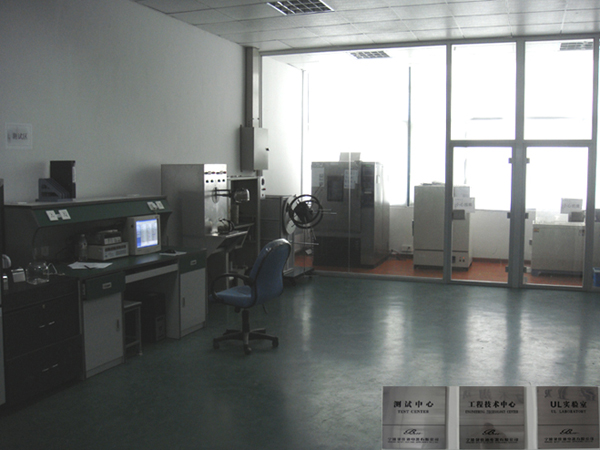 First, Coating Adhesion Cross- Cutting Test
First, Coating Adhesion Cross- Cutting Test
First of all, clean the surface of product for test with a piece of cotton cloth. Then cut a 10*10mmcoated surface (flat) into 100 grids with a sharp knife, with each grid occupying an area of1 mm*1mm(make sure all the incisions should show the base material and the cuts should not be tilted). After that, attach3M600 adhesive tape to the cut surface and press it tight with your finger, and then pull up the tape at an angle of 60° within the time of 0.5-1 second. Repeat the action for three times continuously at
the same position, please note that each time new tapes should be used. At last, rotate the material for 90 degrees and test the coated material for three times in the same way, please note that each time new tapes should be used
Determination: Observe how much coating has been peeled off from the grids. If no coating has peeled off from the grids, the test is successful; if the area of peeling off is more than 15 percent, the result of the test is not good.
Second, Coating Adhesion Fingernail Scratch Test
1. First, clean the coating surface, then cut deep marks on a coated surface (flat) with a sharp knife ( 10 vertically and 10 horizontally), each with a length of10mm. (make sure all the incisions show the base material)
2. To scratch horizontally on the coating with the nail of thumb.
3. To scratch vertically on the coating with the nail of thumb.
Third, Coating Adhesion Pencil Hardness Test
1. To cut off the wooden part of one end of the pencil with a knife and leave the obtuse part that has not been cut, thus there is no need for a fixed device of the lead.
2. To lay an abrasive paper on a flat table and grind the pencil on it vertically with the front-end of the lead and the side wall vertical. Remove the leftover of the side of the pencil’s lead with hand.
3.To fix the product to be tested on a flat and choose a pencil which is harder than the test surface.
Hold the pencil in the way a pen usually be held and press the point of the pencil close to the coating surface at an angle of 45°.
4. To keep the pencil an angle of 45°and scratch it on the coating surface for 1/4 inch with a uniform force. The target is to penetrate through the coating surface into the base material. The test should be stop if the leap is broken.
5. To examine the coating surface. If there are scratches left on the coating surface or it is penetrated by the pencil, choose another pencil a level softer and repeat the test procedures 3-4 till the pencil does not penetrate through the coating surface.
6. To rub the marks left by pencils with a rubber.
Forth, Impact Resistance Test
To assemble spare parts into a machine with rigid bracing. Set the impact bar to 0.5 joule and impact the most vulnerable spot of the product when it is used. The selection of the test spot is optional and each spot should be impact 3 times. If it is broken after impacting, stretch your finger into the gape. It is qualified if the exposed electrified body is untouchable.
Fifth, Temperature Impact Test
To assemble the related components into the sample first, then put the sample into an oven and heat it continuously for 2 hours at a constant temperature of180?. Take the sample out and put it into cold water of5?till it cools off to room temperature. After that, put it into the refrigerator for 2 hours at a constant temperature of-5?. All the above procedures are regarded as a cycle. After 5 cycles, take out the sample and make it cooling down to the room temperature. Contrast the related size of the sample before and after the test and the shrink of the related size should be less than 0.3 percent. There should be no cracks, breaks or other abnormal conditions on the sample after the test.
Sixth, Water Resistance Test
Method one, put the sample into the water of40?for 30 days.
Method two, put the sample into the water of40?±5?for 15-20 minutes, then take it out and dry it. Seal it in a transparent plastic bag and make sure it is exposed to light. Put it at room temperature for a week.
Determination: It is qualified if there has been no bubble, wrinkle or peeling off on the coating surface.
Seventh, Ethanol Tolerance Test
First, clean the printed surface to be tested with a piece of cotton cloth. Then pack the bottom of the jig of 1.5KGF with white cotton cloth and dip it into the 95 percent ethanol. Move it back and forth on the printed pattern and words 30 times. (For about 15 seconds)
Determination: Examine the condition of the surface of the printed products. The printing ink should have no jagging, line breaking, chipping off, serious adverse adherence, etc. It is acceptable if the color is slightly lighter. But the printed pattern and words should be clear and undimmed, or it is not qualified.
Eighth, Solvent Resistance Test
To pack the bottom of the jig of 1.5KGF with white cotton cloth and dip it into the banana oil or washout agent, and then move it back and forth on the printed pattern and words 30 times. (For about 15 seconds)
Ninth, Constant Temperature and Humidity Test
To put the coating sample into the climatic chamber, 60±3?&93%&48H.
Determination: It is qualified if there has been no bubble, wrinkle or peeling off on the coating surface.
Tenth, Salinification Test
A) Immersion
Immerse the product into 3% NACL solution for 24 hours. If the component is not often in contact with water, use the solution of 3%; if it is often in contact with water, use the solution of 5%. The temperature of the water should be 35±2?, and the pressure should be 0.7~1.8KGF/CM2
B) Boiling
Put the product into 3% NACL solution and switch the power on till the water dries out. Then, pour an appropriate amount of solution again. When the water dries out, pour some solution a third time and heat it till steaming appears. Cut off the power as soon as the steaming appears and lay it aside for 24 hours. Pour the remaining solution away and dry the water stains. Conduct cross- cutting test and nail scratching test.
C) Salt Spray
Put the product into the salt spray test machine for 24 hours, then conduct cross- cutting test and nail scratching test.
The test should be conducted at normal temperature.
Determination: The product should not be oxidized and there should be no peeling off, wrinkle or bubble on the coating surface.
11th, Baking Test
To assemble the related components into the sample first, then put the sample into the oven and heat it continuously for 4 hours at a constant temperature of180?. Take out the sample and make it cooling down to the room temperature. To contrast the related size of the sample before and after the test and the shrink of the related size should be less than 0.3 percent. There should be no cracks, breaks or other abnormal conditions on the sample after the test.
Determination: There should be no cracks or breaks on the coating surface.
12th, Long-term life span test
After the complete machine of the sample passes the reliability test, conduct a long-term life span test. The test should be done on the basis of procedures guide books on related machine types. Within 75% of the test cycles, there should be no abnormal conditions such as scorching. After a 100% test cycles, the completion of long-term lifetime test, there should be no abnormal conditions such as peeling off or bubbling on the coating surface.






